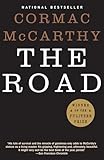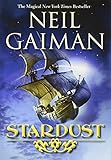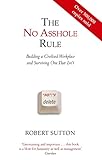1.
In 2009, Cormac McCarthy sold his Olivetti Lettera 32 typewriter at Christie’s for $254,500. With it, he wrote close to five million words over the course of five decades, including his highly regarded novels The Road and Blood Meridian, and the Border Trilogy, which brought him commercial success. Rather than graduate to a computer after the sale, McCarthy replaced his Olivetti with the exact same model—though one in a newer condition. He valued it because it was lightweight, reliable, and portable. For these same reasons, this classic Olivetti model was popular with traveling journalists in the ‘60s.
Don DeLillo and Will Self are also loyal typewriter devotees. “Writing on a manual makes you slower in a good way, I think,” Self told The Guardian. “You don’t revise as much, you just think more, because you know you’re going to have to retype the entire thing. Which is a big stop on just slapping anything down and playing with it.”

 When I first began writing, I would have considered this apparent technophobia as old school—or worse, trendy. Writing can be done anywhere and with anything, can’t it? Writing on a computer is convenient.
When I first began writing, I would have considered this apparent technophobia as old school—or worse, trendy. Writing can be done anywhere and with anything, can’t it? Writing on a computer is convenient.
I first realized the advantages of analog when observing how my husband, who is a photojournalist, uses his vintage film camera from the ’60s. It is a slow, tedious process, one that many other photographers who have “graduated“ to digital consider unnecessary, given technological advancements. He spends up to a minute changing each roll of film. A roll contains 12 frames. Between each shot he must wind the crank. For these reasons, a photograph cannot be taken as instantly as it could be with a digital camera. The film is costly to buy and to develop. You can’t check the frames as you take them. These might sound more like disadvantages, but his photographs, taken during a trip to Cuba and Mexico two summers ago, went on to win the people stories prize at World Press Photo 2017 and were published widely and exhibited internationally.
One disadvantage of digital photography is the temptation for photographers to check their pictures while they’re still shooting. The thumbnails on that tiny display screen often look better than they actually are when enlarged on your computer screen. The digital photographer relaxes—“I’ve got this,” they think, perhaps preemptively.
With film there are fewer distractions like this tendency to self-assess as you go along, and the financial and speed limitations encourage a more mindful process. To avoid wasting precious film and energy, the photographer must frame the picture more carefully. The results are consequentially more often better thought out; the composition more exact. The editing process is also more arduous, given the need to scan contact sheets. You spend more time with your pictures and get to know them better.
The pictures, though fewer in quantity than their digital counterparts, are usually better.

 I was starting to notice an obvious parallel to my own experience of writing on a laptop, and soon began looking for an analogue solution. Pen and paper was the obvious alternative—writers like Truman Capote and Vladimir Nabokov always managed without a computer in the past. More contemporary, Neil Gaiman has written many books longhand, including Stardust and American Gods. Joyce Carol Oates, Margaret Atwood, Jhumpa Lahiri, and J.K. Rowling also prefer penning their first draft.
I was starting to notice an obvious parallel to my own experience of writing on a laptop, and soon began looking for an analogue solution. Pen and paper was the obvious alternative—writers like Truman Capote and Vladimir Nabokov always managed without a computer in the past. More contemporary, Neil Gaiman has written many books longhand, including Stardust and American Gods. Joyce Carol Oates, Margaret Atwood, Jhumpa Lahiri, and J.K. Rowling also prefer penning their first draft.
There is something romantic about the notion of writing in a notebook, though unfortunately I can only sustain it short-term for journalling and the jotting down of ideas; my writing is so small that it’s sometimes illegible even to me, and I can’t imagine having the wrist power to write an entire first draft with pen and paper.
During that summer in Cuba with my husband, I realized how dependent I had become on the Internet for everything; I also learned how much of a distraction it can be from the things I really want to get done. It was the summer of 2016 and Internet access was hard to come by in the country. You had to go to an Internet point and pay about $5 an hour for an Internet card. Even then, the Internet was slow and many websites were censored. Often these Internet zones were on the street; they were easy to recognize, for crowds with smartphones and laptops would be gathered sitting on the sidewalk, despite the stifling humidity. An unusual sight in a country that is not connected. An uncomfortable place to write anything more than a few emails.
Initially being Internet-free seemed impossible—how would I keep up with freelance writing commissions? How would I upload photos of what I was eating or where I was on Instagram, or keep in touch with friends back home? What about responding to urgent emails? I came to realize that there were no urgent emails—most could wait. Without the distractions of social media, I was able to write for myself and read more than 20 books in just one month. I will keep this up when I go home, I thought, but back in London it was far too easy to switch the modem back on and resume procrastination.
Alarm set for 9 a.m.—coffee and toast, followed by four solid hours of writing time. I open Word, write a sentence, then rewrite it. I tell myself not to self-edit, but the delete button is like a bag of unshelled pistachios—too easy, so you keep eating—or in this case pressing.
Some time goes by before I find myself scrolling down my Facebook feed, checking emails, refreshing the page. I wonder how I ended up here, and then I realize I don’t have the will power I believed I possessed. An important email arrives, and reply I must. Morning writing session over.
We as consumers seek convenience, though convenience is often made with the objective of encouraging compulsiveness and habit in users. We’re propelled to keep pressing buttons, opening clickbait articles, and liking mundane posts by acquaintances on social media.
With time, I began to realize that the option to self-edit your own writing as you go along is also seldom a conscious choice. I would spend hours rereading a sentence and dissecting it, when perhaps I should have written with the objective to finish and then rewrite the completed, albeit imperfect, first draft.
It was this need for a slower and more deliberate process, coupled with Will Self’s recent pessimistic prediction about the future of the novel, that reminded me of what he had said about his preference for a typewriter back in 2008; he perceived the slowness it requires as a good thing.
The computer has liberated us in more ways than it has constrained us; while trawling through my dissertation on a laptop during my final year of university, I remember feeling a grain of sympathy for those who lived before the digital age, who would have to write first, second, and sometimes third drafts of essays longhand. Even for those who could not hit “delete” on a typewriter if they misspelt a word or wanted to change the word order.
The Internet has also democratized art in that talented creators from all backgrounds can share their work and self-promote from anywhere and everywhere using social media. Publishers are turning to blogs and platforms such as Instagram and Blogspot in pursuit of the next big thing. Patrons are increasingly self-starters who are interested in new, diverse voices who have not necessarily followed a traditional path to develop their craft.
Though for all their advantages, technological advances have also made us accustomed to instant gratification, and we expect results faster. We’re used to working alongside multiple distractions in multiple tabs and windows: a conversation with a friend in messenger, an interesting tangent on Wikipedia, that funny cat video your mum knew you’d like. With a computer in front of me, I seldom have a moment for quiet and self-reflection. There’s always something to keep me occupied—and if there’s not, I can be distracted at the click of a button—which is detrimental to creativity.
 Sometimes constraints are what we need to work well. As Stanford professor of management science (and bestselling author of The No Asshole Rule: Building a Civilised Workplace and Surviving One That Isn’t) Robert I. Sutton points out, most—if not all creative feats—are created by people facing constraints. During the Renaissance, when patrons commissioned artists to produce works, the contracts would specify what was required for a given project—the deadline, the colors, the style, the materials used, etc. The artist would have had a degree of freedom within these constraints.
Sometimes constraints are what we need to work well. As Stanford professor of management science (and bestselling author of The No Asshole Rule: Building a Civilised Workplace and Surviving One That Isn’t) Robert I. Sutton points out, most—if not all creative feats—are created by people facing constraints. During the Renaissance, when patrons commissioned artists to produce works, the contracts would specify what was required for a given project—the deadline, the colors, the style, the materials used, etc. The artist would have had a degree of freedom within these constraints.
2.
I resolved to buy a typewriter to set myself some constraints and reap the benefits of being alone with a page and a legible font that is thankfully not my own handwriting. I travel regularly, so after considering the Brother typewriter, and various similar lightweight models, decided upon the Olivetti Lettera 32. Aside from knowing it’s the model used by Cormac McCarthy, one of my favorite living writers, it’s a beautiful machine and a retro design piece.
In a past life, my mother had worked a brief stint as a secretary, like many women of her generation dissuaded from more risqué jobs and encouraged to do something “respectable” (she later left her desk to pursue her dream of becoming a musician). Feeling like we had swapped places, I recruited her to help on my search for the perfect typewriter. She would be able to test it and ascertain the condition.
After explaining my reasoning for returning to analog, she suggested I instead look at getting an electronic typewriter so I wouldn’t have to replace the tape. She had been glad to see the back of the typewriter, which was slow, noisy, and often broke down. I told her I wanted that kind of slow, awkward process.
“Bit weird,” she’d said, seeing that I couldn’t be swayed, “but okay.”
Buying and using a typewriter is expensive—but I see it as an investment. Analog generally outlives digital and is less likely to decrease in value. I purchased a refurbished turquoise Olivetti Lettera 32 from Gramercy Typewriters in New York City. The family-run business has been around since 1932 and their knowledge and skills have been passed down through three generations. The familial old-world feel inside the shop contrasts with the hum of the traffic and crowds outside on the streets.
3.
In recent months I’ve drastically reduced my time on social media, and I’ve found that returning to analog has helped me reconnect. We’re in a world where we’re always connected, but we lack intimacy. I’ve rediscovered the art of letter writing—in a letter, you can only say what you really need or want to say as space is finite. There’s something exciting about sending and receiving mail. I like holding in my hand a letter, knowing it’s something tangible I can return to, unlike the old messages and emails that get buried in long-running conversations by memes, links, and cute emoticons. Then there’s knowing that someone went the extra mile for you, that they deemed you important enough to write to.
My Moleskine has found a place again in my handbag, and though I’m unlikely to write anything fully-formed in it, it’s there in case an idea appears while I’m in a cafe, in a train, or on a plane. It’s there in case I grow tired of other mediums, which happens in the same way that I sometimes grow tired of a given working environment and need to relocate.
Writing on a typewriter is slower than typing on word. It’s more expensive—I have to replace the ribbon and regularly buy more paper. It’s a bulky thing to carry around. But as I hit the keys, I hear the sound, and I’m more aware I’ve just written a word. I put more care into carefully crafting each sentence in my mind before I write. Advantageously for me, given my indecisive disposition, with a typewriter I can’t dwell on a section for weeks or months; with no backspace, you have to write to finish. The tidying up of awkward prose can come later. You’re forced to reread and at least write second drafts to smooth out inevitable typos. The laptop can come back for edits. Most importantly, perhaps, there are fewer distractions. The desire to make another cup of tea is perhaps the most pervasive.
Another advantage of analog, one which I hadn’t considered prior to reducing my screen-time, is the reduction of computer-related eye strain caused by looking at bright screens, reflections, and glare. Around 50 percent to 90 percent of office employees who work primarily on a computer suffer from eye strain—and other annoying visual symptoms as a consequence, such as eye floaters and red eye. Migraine aura sufferers often have a visual aura triggered by looking at a flickering screen.
Switching to a new medium in any discipline will not automatically make you a better artist—that requires both talent and commitment. But it can teach you to slow down, disconnect, reconnect, and in this instance favor quality over quantity—and completion over counterintuitive perfectionism.
Photo courtesy of the author.





